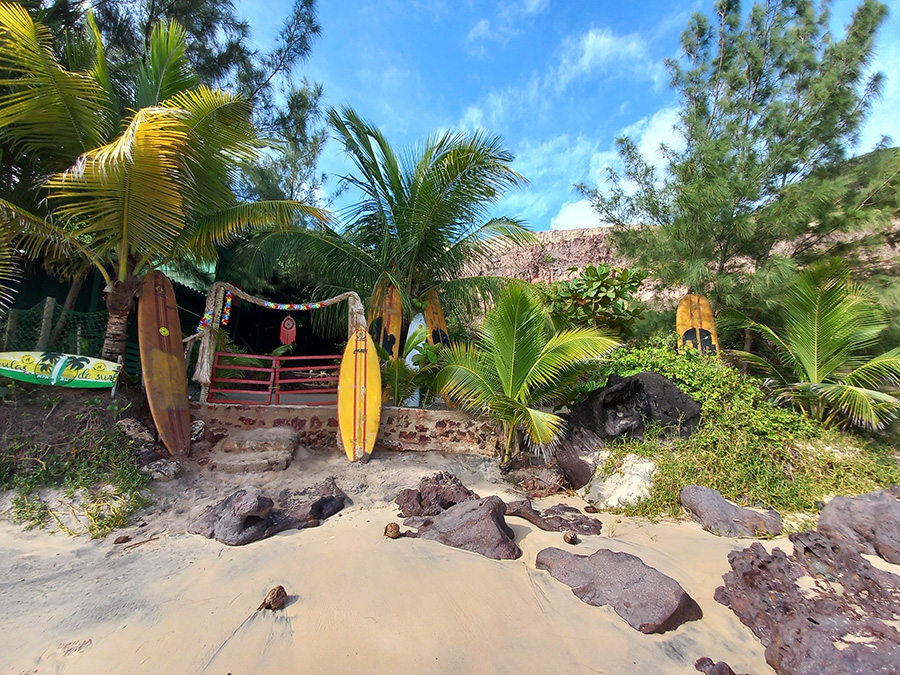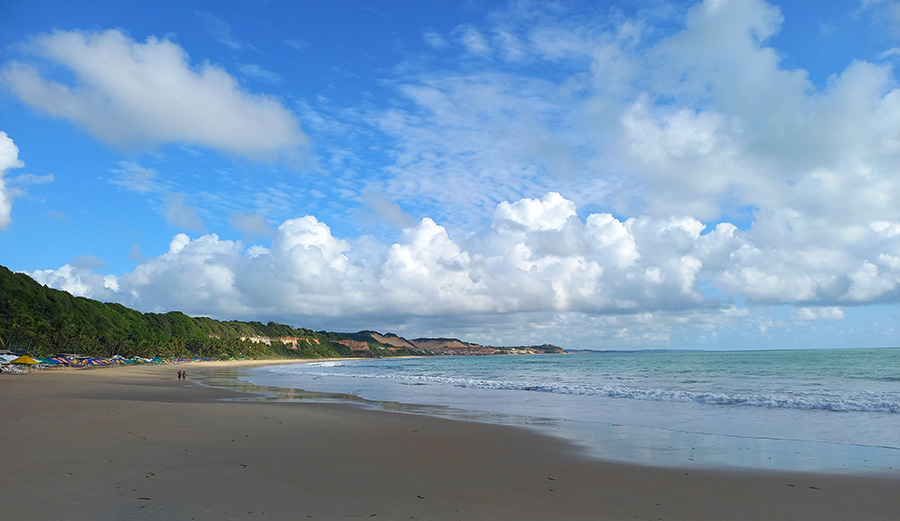Lorena Costa: Brazilian architect in the Wellington studio
17/7/2022
Brazilian architect Lorena Costa joined HMOA Wellington in early 2021. She grew up in Santa Cruz, Rio Grande do Norte:
‘A place where not much happened and with few opportunities,’ she says. Yet from there, it was university and international travel. We asked Lorena how she did it …
Lorena, why an interest in architecture and in New Zealand?
I knew from an early age that I wanted to go to university and pursue a profession that involved creativity. My mum always inspired me to try hands-on projects, and I started to pay more attention to my cousin, who was an architect – I probably should have asked him some serious questions about architecture, but he always looked happy in his job, so that was enough for me! I decided to go ahead with architecture and was delighted to be accepted into the competitive programme at the Federal University of Rio Grande do Norte, UFRN.
In my fourth year, I interned at my cousin’s studio and learned a lot from him – he has strong values and a good eye for design.
Since graduating, and despite living in exciting parts of Brazil, including Rio de Janeiro and the beautiful coastal areas of Armaçoes dos Buzios and Vitória, Espirito Santo – as well as in Europe and the US – there was a pull to venture further. My partner and I wanted to live in an English-speaking country that didn’t have Brazil’s level of corruption and crime, so we applied for working visas to New Zealand. We knew there were only 300 spots available for 10,000 applicants, so when we were successful, we felt like New Zealand had chosen us.
How did your training differ from that in New Zealand?
The New Zealand programme is a three year bachelor degree followed by a two year master’s. My degree was also five years but it was in architecture and urban planning. It also included internships in an architectural practice. Another difference is that Brazilian architecture graduates can gain registration straight away, while in New Zealand you need to work for a few of years and gain practical experience before applying for registration.
My training included a lot of discussion about how to shade buildings and minimise solar gain, rather than insulation. Where I’m from, we don’t have cold weather. Natal's winter minimum temperatures remain around 20 degrees at night and daytime temperatures, even in winter, are above 28 degrees. We also don’t have earthquakes or strong winds, so bracing was not part of the curriculum.
I loved the urban planning aspect of my degree. I enjoyed thinking about how people use a city and what can be done to improve it; how to provide more inclusive and secure spaces for everyone.
Packing up the HMOA bookshelf recently for our studio move, I found a copy of The Concise Townscape by Gordon Cullen. It took me back – I have great memories of this book.
Which Brazilian architects do you like?
I love Lina Bo Bardi’s Casa de Vidro (Glass House), the work of Paulo Mendes da Rocha, Casa King and Masetti House, and Marcos Acayaba’s Casa Milan.
You recently went home to meet your sister’s new baby …
It was an amazing trip. I went to Houston for a couple of days on the way and visited my dearest friend who lives there. We went to see the expansion of the Museum of Fine Arts, designed by Steven Holl. We were so impressed by the beautiful forms of the building.
From there, I headed to Natal, my hometown – my family moved there when I was sixteen. I stayed with my mother for a few days, and we enjoyed the beaches there. Then I visited my sister in Currais Novos, where we had my niece’s Catholic baptism.
During the Easter holiday, the whole family gathered and we went to Pipa – my favourite place with the most amazing beaches. The sea is a perfect temperature, so much warmer than in Wellington! There are great restaurants and a vibrant atmosphere. We stayed in a beautiful house with a big verandah, full of hammocks. It was perfect, I enjoyed spending time with my family, especially with my little niece – the first grandchild in the family.
Being in New Zealand during the pandemic had lots of benefits, but the worst part was not being able to travel. So when I finally got to Brazil, I was still a bit nervous that I could get stuck somewhere.
Apart from family, what do you miss most about Brazil?
The weather and the food. Natal is often called the city of the sun, it’s so sunny. New Zealand has taught me to make the most of the sunny days. And I love how long the summer days are here.
In Brazil, we have a huge range of fruit and traditional dishes. I miss açaí, caju (cashew), seriguela, graviola (soursop), to name a few. I’ve even started missing the unhealthy foods that I didn’t even used to eat a lot of!
How does working in architecture here differ from Brazil?
Brazilians usually only engage an architect to get a building consent, and the requirements for getting a consent are mostly straightforward. Once they have the consent, most clients start making changes to the design and the final building is then completely different to what it was supposed to be.
Although it’s not perfect here, I’ve found that New Zealanders tend to value the work of an architect more than in Brazil. This helps us to do a better job and to get a better result for our clients. In terms of documentation, I was pleased to discover how detailed the projects are here and how engaged we can be in every stage of the process.
There are big differences in how buildings are constructed. The majority of Brazilian buildings are made of brick, mortar and concrete – I’ve never seen a timber-framed house in Brazil. Building there is also much cheaper because there is an abundance of reasonably-priced building materials and affordable skilled labour.
What’s a New Zealand building you particularly enjoy?
I admire the Auckland Art Gallery. I love how the old part mixes with the new and how it incorporates elements of Māori culture.
How is it working for HMOA?
I’m very proud to be part of the HMOA team – it’s full of people ready to uplift, motivate and support each other. We have a great atmosphere; everybody has a good sense of humour and we have fun in amongst the work.
We even used to have yoga lessons together one lunchtime a week, but with lockdown interruptions and some of us getting too busy, these were paused. I really hope we can get them going again in the new office!
What's a typical Wellington Sunday for you?
I’m rushing during the week, so I love a lazy, simple Sunday.
I try not to follow a routine, but often start the day catching up with family in Brazil. My partner and I might head out for brunch or to a beach. Lately, we have been enjoying a walk on the waterfront, and I always end up at the habourside market. In the evening, it’s often homemade pizza and a silly comedy.
I’d like to go to more Sunday Jazz concerts. I haven’t been in those since last year, and I love them.
What are you reading?
Hateship, Friendship, Courtship, Loveship, Marriage by Alice Munro. I have read a few of her books and really enjoyed them. I love the way that she writes about human complexities and tells a story without saying too much. You have to read between the lines.
I also recently added Goldenrod by Maggie Smith to my kindle– sometimes I just need some nice poetry to get a romantic view of life again.






